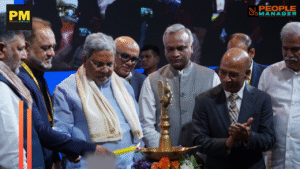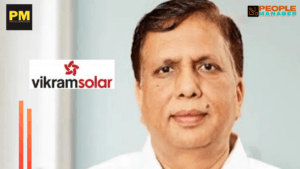India’s job market lags behind economic growth: Study
India’s job market (Employment) rate has been declining since the 1990s, recovered in 2004–2005, and approached stagnation in 2011–2012.

The country’s economy grew between 2004–05 and 2017–18, but the employment rate did not keep up with the rise in the number of people of working age.
Researchers from the Ministry of Agriculture and Farmers Welfare, Birla Institute of Technology and Science, Pilani, and the Indian Institute of Management Lucknow (IIM Lucknow) collaborated on this study, which has discovered this. According to an official announcement, the researchers examined data from the Periodic Labour Force Survey Dashboard and the Employment and Unemployment Survey from the National Sample Survey Office (NSSO) for this study.
They found that while though the agriculture industry employs a lot of young people, it adds very little to the economy as a whole, creating significant employment issues.
In contrast, despite their ability to spur economic growth, non-farm sectors—which have greater potential—have demonstrated a less inclined attitude to hire, according to the statement.
According to the report, employment has been declining since the 1990s, recovered in 2004–2005, and approached stagnation in 2011–2012. According to the release, even though the economy grew significantly between 2004–05 and 2017–18, there was not enough employment created during this time, which resulted in a period of “jobless growth,” when workers were underutilized despite the rise in the working-age population (ages 15–64).
“The new employment structure is based on non-standard employment types like contract, fixed-term, and casual work, entwined with discrimination and social hierarchy, creating new forms of precariousness and widening the gap in the labor market overall,” D. Tripati Rao of IIM-Lucknow stated.
This phenomenon is caused by a number of variables, one of which is that a higher percentage of self-employed people (55%) work in India than in the US (33%). Youth with high levels of education are experiencing an increase in unemployment, while gender differences in the workforce continue.
According to NITI Aayog, the short-term gig and platform economy is growing and will employ 23.5 million people by 2030; nonetheless, jobs in the informal sector are insecure for these workers.
In order to promote equitable growth, the analysis suggests a critical policy intervention: increasing the labor intensity of the manufacturing sector. The researchers contend that numerous businesses will gain from this strategy’s substantial linking effects. It further stated that there is promise for transforming jobless youth into a competent and superior workforce due to recent advancements in India’s health and education systems.
Read more HR news like this on PropleManager.co.in
Value our content… contribute towards our growth. Even a small contribution per month would be of great help to us. Since our establishment, we have been serving the industry through daily news and updates.
Our content is free for all, and we plan to keep it that way
Support the People Manager. Pay Here
- Vikram Solar Appoints Arun Mittal to Lead its Energy Storage Arm - December 3, 2025
- Preventive Healthcare Emerges as a Strategic Investment | Howden Global Employee Benefits Report - November 18, 2025
- Apollo Tyres Ltd and KIIT Announce India’s First Strategic Academic Collaboration - November 18, 2025








